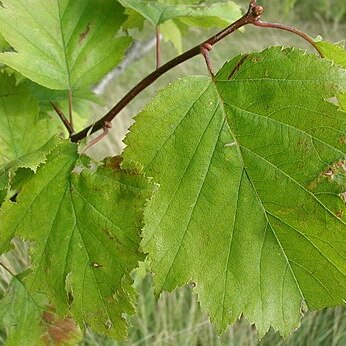Irregularly and often intricately branched shrub 1–3 m, or a small tree 3–8 m, with few or many slender thorns 2.5–5 cm, the twigs glabrous or villous; lvs thin but firm, ovate to elliptic, rhombic, or even suborbicular, 2.5–6 × 1.5–5 cm (or the vegetative ones larger), usually with several pairs of shallow lateral lobes, glabrous to short-villous; petiole 1–3 cm, evidently glandular; fls 1.3–2 cm wide, 4–10 in simple or compound, lax, glabrous or villous cymes, these with numerous bracts conspicuously and copiously stipitate on the margins; sep narrow or broad, glandular-serrate or entire; fr green or yellow to orange or red, 0.7–1.5 cm thick, with thin dry flesh and mostly 3–5 nutlets. N. Engl. and s. Ont. to N.C. and Ala., w. to Mich. and Ark. (C. biltmoreana; C. boyntonii; C. foetida; C. fortunata; C. neobushii; C. rubella; C. stonei)
A shrub or small tree. It has many branches and forms thickets. The crown is irregular and open. It grows 6 m high. The trunk is 15 cm across. The leaves are 2.5-6 cm long and 2.5-5 cm wide. They are broadly oval and blunt at the end. It has double teeth. They are green above and paler underneath. The flowers are 15 mm wide and have 5 white petals.

